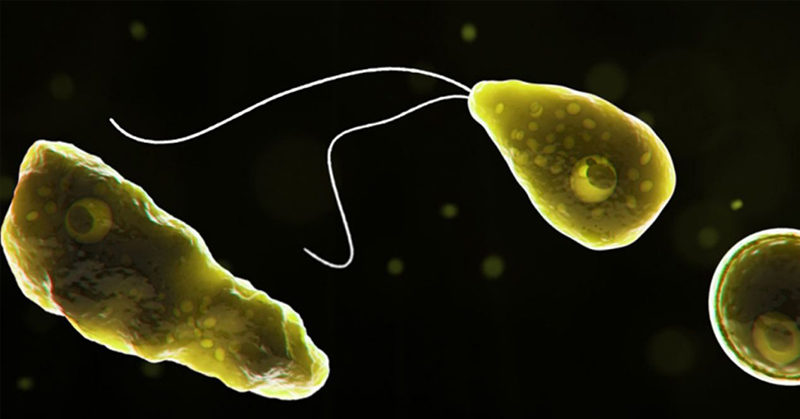Lakes, rivers, and streams are home to thousands of bacteria. Many of these bacteria are harmless, however fresh water is host to numerous microorganisms that can directly affect human health.
Polluted drinking water is a major source of illness and death around the world, particularly in developing nations. In most cases, these organisms make their way into our bodies through the digestive tract when we drink the contaminated water [1].
There is another microorganism that can be found in lake water that is harmless when ingested, but deadly when inhaled through the nose. It is a brain-eating amoeba that is exceedingly rare but nearly impossible to treat.
A Brain-Eating Amoeba
Naegleria fowleri are amoeba that live in warm freshwater. It enters the body when contaminated water gets in your nose. This typically occurs when people go swimming or diving in warm freshwater places, such as lakes or rivers.
The Naegleria travels up your nose and destroys your brain tissue. This causes swelling and death.
Unlike other common pathogenic freshwater organisms (i.e. pathogenic bacteria), you cannot be infected with this amoeba by drinking contaminated water. In some very rare instances, infections have been reported from inadequately chlorinated swimming pools, or when people submerge their heads in water during a religious ceremony.
Naegleria fowleri can be present in water around the world, but in the United States it exists primarily in freshwater in southern-tier states. Other places it can be found are in geothermal hot springs, warm water discharge from industrial plants, water heaters, and soil. It is not present in ocean water.
Naegleria fowleri are found in these areas because it is a thermophilic organism. That means that it loves warm temperatures. This brain-eating amoeba grows best at higher temperatures up to 115 degrees Fahrenheit (46 degrees Celsius). It can also survive for shorter periods of time at higher temperatures. As water temperatures drop, however, you are less likely to find it.
For this reason, infections typically occur during July, August, and September, when temperatures are warmer [2].
What are the Infection Symptoms?
Naegleria fowleri causes a disease called primary amoebic meningoencephalitis (PAM). This is a brain infection that leads to the destruction of brain tissue.
Initial symptoms typically start one to nine days after infection, with an average lag time of about five days. Symptoms may include a headache, fever, nausea, or vomiting. As the infection progresses, you may experience a stiff neck, confusion, lack of attention to people or your surroundings, loss of balance, seizures, and hallucinations.
PAM progresses extremely rapidly, and typically causes death within five days. It could, however, take as little as one day, and as much as twelve days [2].
How Common is Naegleria Fowleri?
The good news is, this brain-eating amoeba is very rare. Between 1962 and 2018, there have only been 145 known infections in the United States.
The fatality rate, however, is extremely high. Of those 145 infections, only four people have survived. That puts the fatality rate at over 97 percent [2].
It is unclear whether or not there is an effective treatment for a Naegleria fowleri infection. There are several drugs that were effective in a laboratory setting, but since the majority of patients with PAM die so quickly, it’s difficult to know which drugs work in a clinical setting.
According to the CDC, two patients recently survived when they were treated with a new drug called miltefosine in combination with other drugs and aggressive management of brain swelling [2].
How Can You Reduce Your Risk of Infection?
Since the amoeba only infects people when contaminated water enters the nose, the best way to reduce your risk of an infection is to avoid letting water go up your nose. You can also reduce the chance that Naegleria fowleri will be present in the water.
The Texas Department of State Health Services recommends people take the following precautions:
- Avoid water-related activities in bodies of warm freshwater during periods of high water temperature and low water levels.
- Hold the nose shut or use nose clips when taking part in water-related activities in bodies of warm freshwater [3].
Currently, it takes weeks to identify if the amoeba is present in a body of water. Experts are working at developing new detection tests, but for now they are recommending that most people assume a low risk, even if they do choose to swim in freshwater [2].
Keep Reading: If the Mosquitos Always go Straight for You, Here’s What You Need to Know

